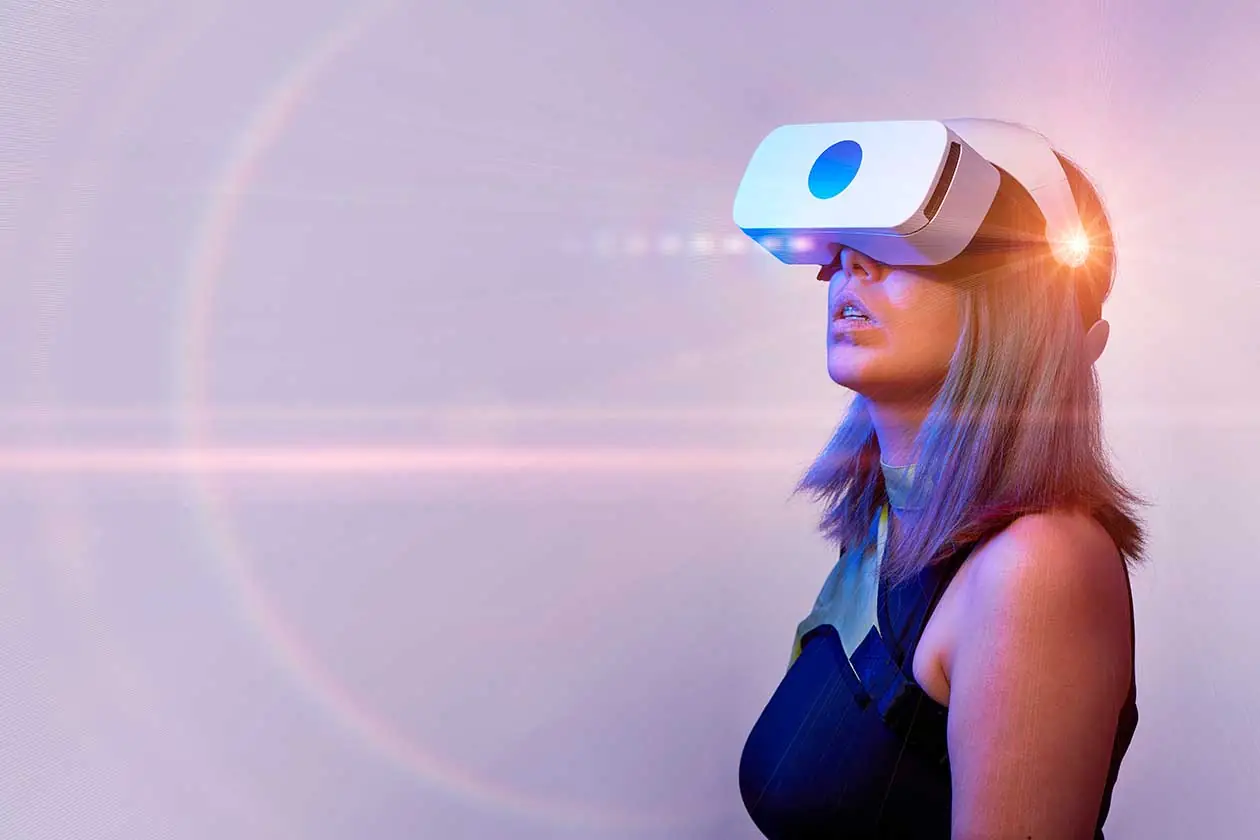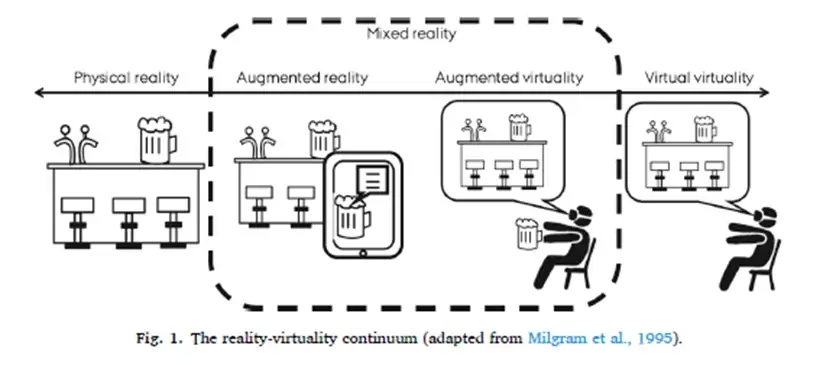Product tests are usually carried out in sensory laboratories, but the lack of context creates a sensory experience that is far from real consumption conditions. Immersive technologies, such as virtual reality glasses, have begun to be incorporated into these studies as they allow for the creation of more realistic consumption contexts. In this article, we tell you what these virtual reality studies involve, what is needed to create them, and examples of real applications. Are you interested?
- Why is virtual reality being introduced into consumer studies?
- How to implement virtual reality in consumer studies?
- What are the main applications of virtual reality in consumer studies?
Sensory analysis and consumer research studies are widely used across different sectors for various purposes. Sensory tests are usually carried out in sensory laboratories, where consumer preferences are evaluated in as neutral a situation as possible, avoiding biases and other sources of variation other than those inherent to the products being evaluated. However, this lack of context recreates a sensory experience that deviates from the real conditions of consumption.
Immersive technologies have begun to be incorporated into sensory analysis and consumer opinion research studies in recent years. One of the main advantages of their use is the enhancement of the ecological validity of study results: Instead of consumers sitting in white booths in a silent environment, participants can be exposed to a variety of visual and auditory stimuli to help them feel as if they are evaluating the product in a situation where they are likely to make those decisions.
Immersive technologies are diverse, including:
- Videos displayed on a computer screen.
- Virtual walls where the projection is made on the walls of a room.
- Virtual reality headsets or glasses in which the participant sees a context different from the physical reality.
- Information presented to the user overlaid on reality, generated by a digital interface to extend reality with virtual effects.
From the realest reality to the most virtual virtuality. The virtual reality continuum
As Qian Janice Wang from the Faculty of Science and Technology at Aarhus University states, virtual reality includes a series of technologies that we could align on a continuous dimension, from the realest reality to the most virtual virtuality. To understand this “continuum,” let’s look at an example.
- Real context: In a beer study, we might have the consumer evaluating the beer in an actual pub. This would be called a real context. Even in the tasting room itself, it would be real, although, as we’ve mentioned, it wouldn’t be the typical consumption situation.
- Augmented reality scenario: If we were in an augmented reality scenario, we could, for example, place the mobile phone over the beer label and visualize through the mobile phone digital information about how this beer was produced. This information would be an extra layer on top of the physical reality.
- Augmented virtuality scenario: And if the consumer wears virtual reality glasses through which they are seeing a pub while actually drinking a beer, we would be in a scenario of augmented virtuality. It’s a virtual environment in which we are immersed, but we can interact with elements of the real world. The consumer can have contact with the product being tested and taste the beer.
- Fully virtual environment: Finally, if we immerse the consumer in a completely virtual environment, detached from the physical reality, we find ourselves at the extreme end of virtuality where the consumer can no longer have contact with the beer.
Consumer studies with virtual reality
Consumer studies can be divided into two types:
- Those that use food choice scenarios and are fully implemented in virtual reality.
- Those that use product evaluation scenarios, in which there is actual and physical contact with the product being evaluated.
Food Choice Scenarios
Studies using food choice scenarios are less advanced than those involving product evaluation scenarios. Creating shopping scenarios requires a high degree of interactivity and programming. The creation of 3D food models and programming functions for their virtual manipulation is complex and requires highly specialized personnel. These studies can be particularly relevant for studying the effect of different factors on purchase choice, or how various variables can induce certain behaviors and emotions.
Product Evaluation Scenarios
- Use of Virtual Reality Glasses: Product evaluation studies induce the context of evaluation and/or consumption of the food, but this is not represented in virtual reality. The benefits of this type of study are that the programming is much simpler. The challenge of these studies is related to the instructions given to the participant so that within the virtual context they can interact with the product to be evaluated, in such a way that the participant does not leave the virtual environment. The difficulty of having participants evaluate products while wearing virtual reality glasses is perhaps one of the reasons why some researchers use the glasses only to create the context, and then the participants evaluate the products outside of the virtual environment (Wen and Leung, 2021).
- Use of Virtual Reality Trackers: A solution in the real product evaluation from viewing a virtual scenario with Virtual Reality glasses is to introduce the aspect of the food into the virtual environment through 3D modeling and establish an interaction of these with the physical reality of the same. Different authors have found different ways to do this. One of the solutions is through the use of virtual reality trackers. These trackers are attached to the physical product or food holder and can be mapped by the virtual reality system achieving the interaction between the virtual and real world (Oliver and Hollis, 2021). This way, participants can manipulate the real beverage and be viewing it in the virtual scenario.
Immersion and Presence in Virtual Reality Contexts
Virtual reality technologies must strive to be as immersive as possible to make participants believe and feel they are in the chosen context. Consumers are aware that the scenario is created by VR headsets or goggles, so how can we make them somehow feel they are in that virtual place, knowing they are not really there? The concepts of immersion and presence delve into this phenomenon. The concept of immersion is more objective, linked to technical features of digital systems, while presence is more tied to the participant, to the “feeling of being there”.
Predicting the level of immersion of a virtual reality system is not easy. It depends on factors such as:
- Graphic realism
- Consumer’s visual panorama,
- Sound quality, processing speed
- Correspondence between what the consumer does and the changes it may cause in the representation of virtual reality, etc.
There is much debate regarding the true influence of these factors and the relationship between them. For example, photorealism is initially required to create a sense of presence, but it is known that more graphic realism does not always lead to greater immersion. On the other hand, in terms of enhancing the sense of presence, it is important for the consumer to feel comfortable, natural, while interacting in the virtual world, so prior familiarization with the technology can often be useful. Evaluating the degree of immersion and presence of virtual reality developments is key.
Software and Solutions for Creating Virtual Reality Scenarios
Speaking of the creation of virtual reality scenarios, there are primarily two solutions for their creation.
- Recording a video with a panoramic camera (360º video): The first solution would be the use of videos known as 360º or the use of virtual reality environments. Videos can be recorded with a panoramic camera or using pre-existing, already recorded videos. There are some platforms that host this type of videos for use. Panoramic cameras, although they have become popular, the scenario they generate allows for little interaction.
- Creation of a virtual reality environment (design software): The second solution is to build a virtual reality environment, or the use of an already existing one, with software for designing virtual reality scenarios. This option allows you to adapt and customize the environment. There are also platforms to develop these scenarios. This option requires advanced programming knowledge.
Future Applications of Virtual Reality in Sensory Analysis and Consumer Research
- Appetite Regulation: Obesity is a major public health issue worldwide. Traditional weight management programs are costly and lengthy, being effective in the short term but ineffective after a year of treatment (Coons et al., 2011). Some researchers and healthcare professionals have begun exploring virtual reality contexts that can be used in obesity and eating disorder treatments. Rumbo-Rodriguez et al. (2020) show evidence of improved outcomes for obese patients in treatments and greater weight loss using digital technologies such as VR.
- Enhancement of Eating Experience: One application of VR is improving consumption situations in extreme environments. For example, in space, astronauts are observed to consume 80% of their daily calories, which may not seem alarming, but in a sustained situation, it can lead to malnutrition. Considering that food in space is served in tubes or vacuum-sealed plastic bags and eaten in confined spaces filled with other technical equipment, it is conceivable that virtual reality could help create a more comfortable and natural food consumption context, leading to greater food acceptance (See more about this research in the article by Meiselman et al., 2000). This gives us an idea of how VR could help in contexts such as hospitals, boredom relief, and appetite induction.
- Changes in Consumer Attitudes: VR could also be used to induce more sustainable behaviors, for example, by creating interactive experiences or games in which users must consume foods they are not familiar with but are more sustainable in real life. Through play and repeated exposure, these experiences could introduce consumers to new or sustainable foods and increase their acceptability.
At AINIA, we are researching how to implement and apply virtual reality technologies in consumer behavior research, focusing on sensory analysis and health, as well as exploring other newer, challenging, and promising technologies in critical sectors such as healthcare and education, including collaborative metaverse-like environments.






